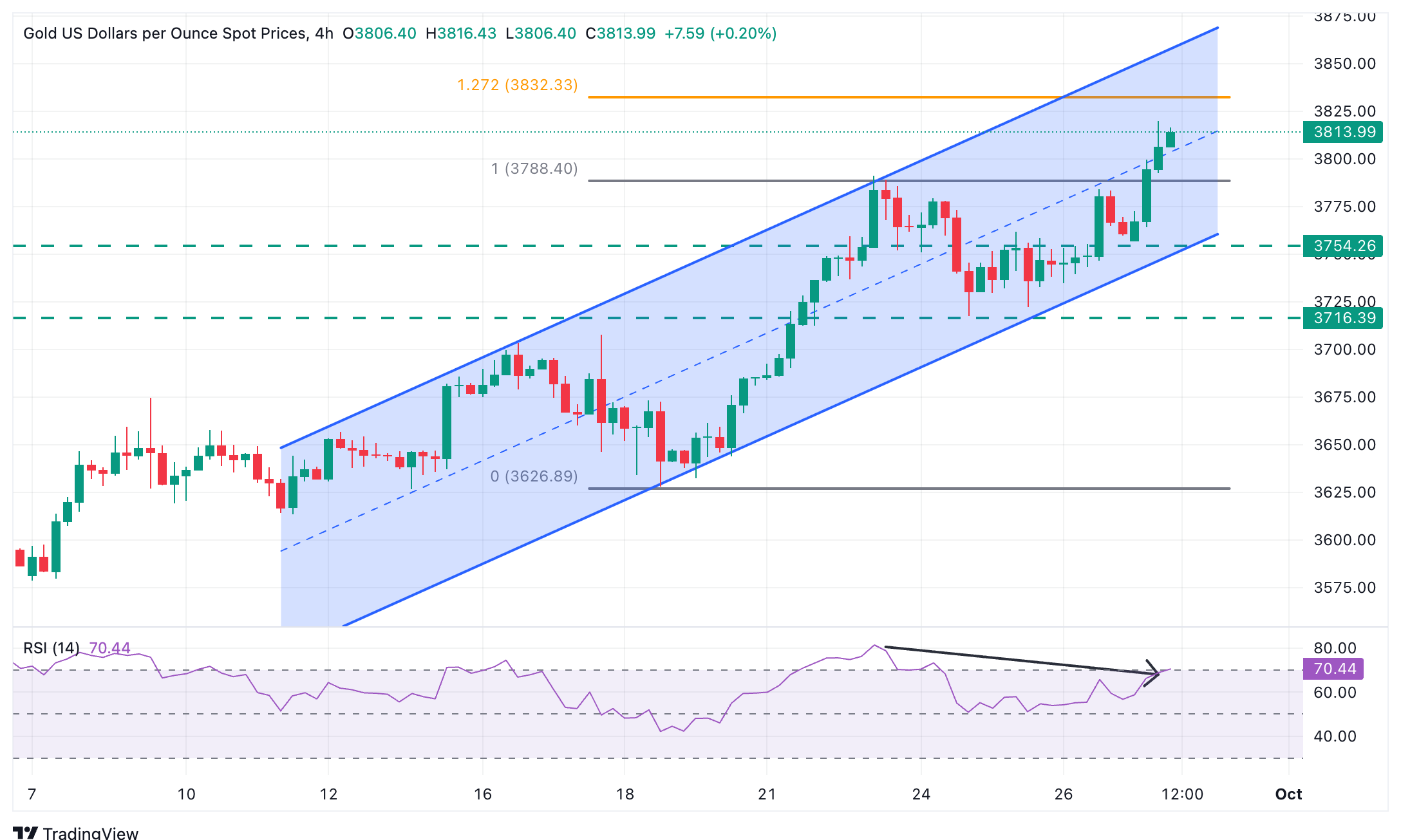Gold Price Forecast: XAU/USD rallies to $3,820 amid a potential US government shutdown
- Gold reaches fresh all-time highs beyond $3,800 amid concerns of a US government shutdown.
- Lower US Treasury yields and a tumbling US Dollar are buoying precious metals on Monday
- Technically, the RSI divergence suggests that the bullish trend is losing momentum.
Gold is trading above $3,800, after hitting fresh all-time highs at $3,819 on Monday's European session, with precious metals thriving and the US Dollar tumbling as investors brace for a potential shutdown of the US government on Wednesday.
Trump is expected to meet bipartisan congressional leaders later on the day, but the odds of an agreement look highly unlikely. The US President considered the demands of the Democratic leaders “totally unreasonable”, and there is growing speculation that he might use the shutdown to push his agenda of a downsized public sector.
Technical indicators are showing a bearish divergence

The fundamental scenario remains supportive, but technical indicators are showing a different picture. Gold’s trend remains bullish, but the 4-hour RSI shows a bearish divergence, suggesting that the trend might be losing steam after having rallied more than 5% in the last 10 days and More than 15% in the last five weeks.
To the upside, above the mentioned intra-day high of $3,818, bulls may be challenged by the 127.2% Fibonacci extension of the mid-September bull run, around $3,830, and the trendline resistance in the vicinity of $3,860.
A pullback from current levels, on the other hand, might be capped at the previous resistance area of $3,790, where the metal was held on September 23 and 26. Below here, the confluence of trendline support with the September 28 low, at $3,755, and the September 24 low, near $3,715, would come into focus.
Gold FAQs
Gold has played a key role in human’s history as it has been widely used as a store of value and medium of exchange. Currently, apart from its shine and usage for jewelry, the precious metal is widely seen as a safe-haven asset, meaning that it is considered a good investment during turbulent times. Gold is also widely seen as a hedge against inflation and against depreciating currencies as it doesn’t rely on any specific issuer or government.
Central banks are the biggest Gold holders. In their aim to support their currencies in turbulent times, central banks tend to diversify their reserves and buy Gold to improve the perceived strength of the economy and the currency. High Gold reserves can be a source of trust for a country’s solvency. Central banks added 1,136 tonnes of Gold worth around $70 billion to their reserves in 2022, according to data from the World Gold Council. This is the highest yearly purchase since records began. Central banks from emerging economies such as China, India and Turkey are quickly increasing their Gold reserves.
Gold has an inverse correlation with the US Dollar and US Treasuries, which are both major reserve and safe-haven assets. When the Dollar depreciates, Gold tends to rise, enabling investors and central banks to diversify their assets in turbulent times. Gold is also inversely correlated with risk assets. A rally in the stock market tends to weaken Gold price, while sell-offs in riskier markets tend to favor the precious metal.
The price can move due to a wide range of factors. Geopolitical instability or fears of a deep recession can quickly make Gold price escalate due to its safe-haven status. As a yield-less asset, Gold tends to rise with lower interest rates, while higher cost of money usually weighs down on the yellow metal. Still, most moves depend on how the US Dollar (USD) behaves as the asset is priced in dollars (XAU/USD). A strong Dollar tends to keep the price of Gold controlled, whereas a weaker Dollar is likely to push Gold prices up.

